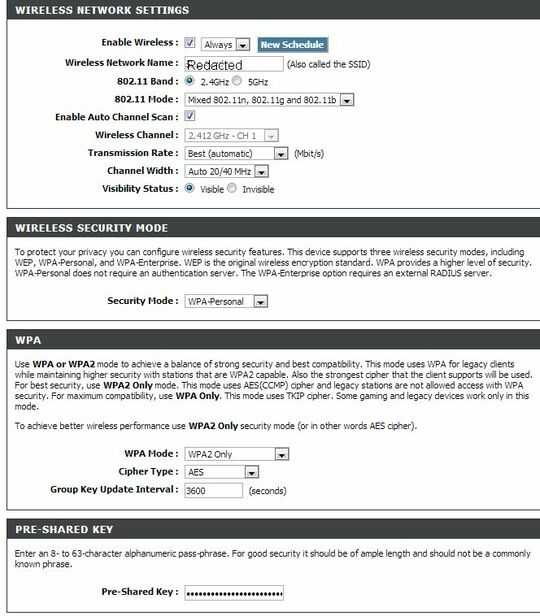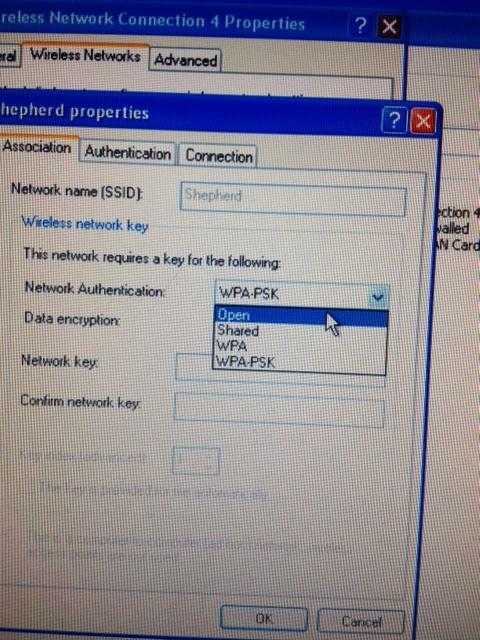1
I'm currently doing a spare-parts build to put a media computer in the living room, and having a devil of a time getting my Rosewill RNX-6300 wireless card to connect to my network.
I'm trying to set it up using Windows as opposed to the proprietary Rosewill software -- the Rosewill software is a little over my head. It can find the network fine, but when I try to connect, I don't get the password prompt -- it moves straight to "validating identity," scans, and then says "Windows was not able to find a certificate to log you on to the wireless network Foo."
The maddening thing is that the card was working fine a week ago, in the same box, using the same OS. I pulled everything out, swapped out the motherboard, and reinstalled Windows on a freshly wiped hard drive, and now I can't get it up and running again. Suggestions?
I've taken several runs at it, including attempting to manually change the settings for the network to include WPA-PSK and AES and the password, and I'm a bit worried that I've totally boned everything.
My router settings:

ipconfig/all results from the XP box:

Again, this card was working on this network a week ago. I can't figure out why I can't get it up and running now.
There's no WPA2 on the card, just WPA and WPA-PSK:

WPA-PSK was the only setting that would let me enter a network key. I had TKIP and AES as options there, but cipher type is AES on the router, so I chose that.
(I tried TKIP later, when this didn't work, with the same results as described below.)
So I set it to WPA-PSK / AES and entered my security key. It's mixed letters and numbers, 32 characters long.
No joy. Still "waiting for reply" in the main screen, and "cannot find certificate" on the pop-up.
And if I try again and return to the settings again, it is reset to Open/AES. It also re-enables 802.1x in the Authentication tab if I've deselected it with WPA-PSK. It also reshortens the password.

I have no idea how I blundered into getting this working in the past. I am, as you can tell, far from proficient at this. It was working before, though. What am I getting wrong?
Yes -- I think that's covered in the first image up top, which is a screenshot of my router settings. It's 2.4GHz, WPA2-Personal/AES, and I'm not sure about regular or wide, but in "Mode" it says it takes 802.11n, 802.11g, and 802.11b. – JeanSibelius – 2013-11-03T14:04:38.300
Is there a popup with "Windows was unable to find a certificate to log you on to the network shepherd"? (Yellow popup like here ). Asking because certificates are used for WAP2 enterprise and not for WPA2 personal.
– Hennes – 2013-11-03T14:14:39.047Yes, that's exactly the pop-up I'm getting. – JeanSibelius – 2013-11-03T14:30:02.563
In the same link, skip to step 5. Is there a tick at "Enable IEEE 802.1x authentication for this network"? If there is, remove it. (802.1x uses a radius authentication server. This is probably not the enterprsie setup which you have at home. (Basically that uses a certificate to contact a central authentication server whereas you use a pre shared key).
– Hennes – 2013-11-03T14:39:51.780